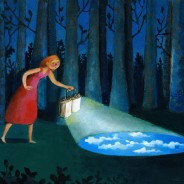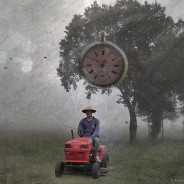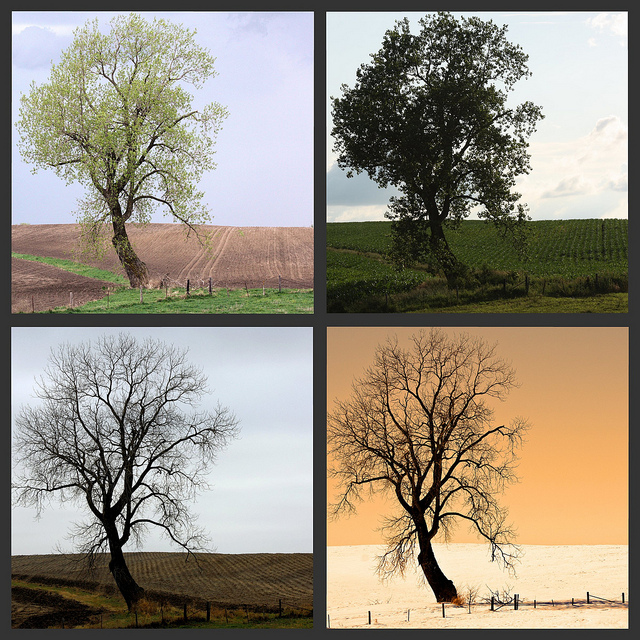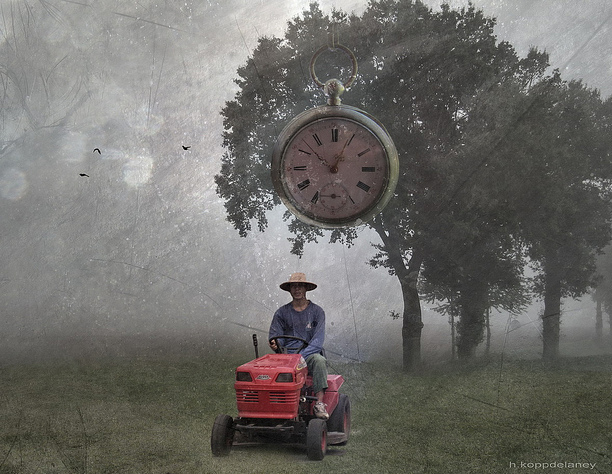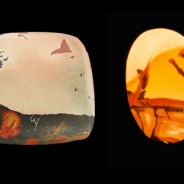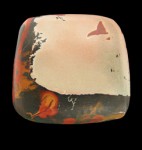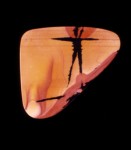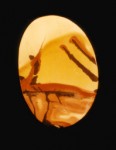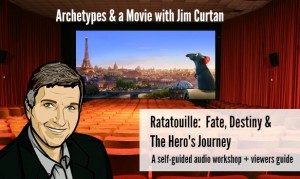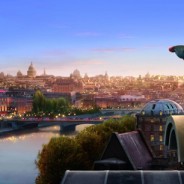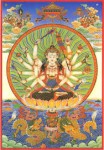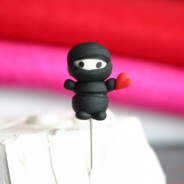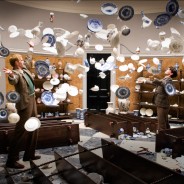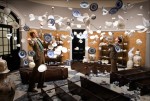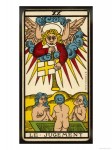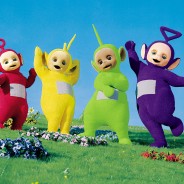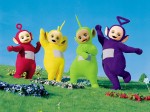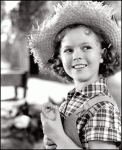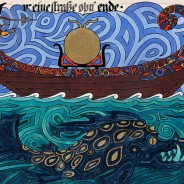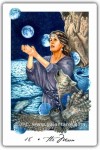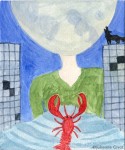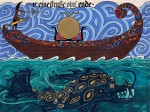Releasing Limiting Beliefs Using Archetypal Images
How can you use the archetypal images of the Tarot to release limiting beliefs? In this special edition of the Archetypal Tarot Podcast, Cyndera has a conversation with Stephanie Megan of Soulshine Tarot about just that.
Stephanie Meghan a Tarot Archetypal Hypnotherapist and owner of Soulshine Tarot an online personal development practice that uses the archetypal images of the Tarot. Meghan is an ivy-league trained scientist who takes a no-nonsense approach to reading Tarot and helping her clients release limiting beliefs.
Stephanie offers customized sessions with guided meditations mixed with a gentle hypnosis. Meditation is an immensely powerful and beneficial tool that can enhance your well-being and can allow you to remove limiting beliefs that cloud your path to happiness.
Connect with Stephanie on Facebook
Want to email us about the Archetypal Tarot Podcast? We’d love that! ATPodcast@archetypist.com
Listen to the episode below or subscribe on iTunes
Books That Saved My Life
I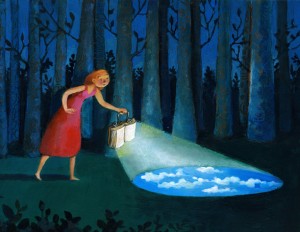 nto each life comes information that changes the course of your life, in tiny ways and gargantuan ones. For me, books have always been a source of life-changing information. Fiction and non-fiction alike have turned the rudder of my life for as far back as I can remember. There are some that I sought out, heard about from a friend or teacher and others that literally have leaped off the shelf and fallen at my feet.
nto each life comes information that changes the course of your life, in tiny ways and gargantuan ones. For me, books have always been a source of life-changing information. Fiction and non-fiction alike have turned the rudder of my life for as far back as I can remember. There are some that I sought out, heard about from a friend or teacher and others that literally have leaped off the shelf and fallen at my feet.
If you have a curiosity about meaning, creativity, relationships, connection, philosophy and just what the heck our purpose for being here is, you will get a great deal from these books too.
Of the very, very long list I could create, these are 10 of the most influential in my own life. I have read them all again and again, always gleaning new and delightful truth from them and often at just the right time.
There would be no point in trying to rank them in order of importance or impact but I’ve listed them in the order that I read them for the first time, going back over 20 years.
Over the coming months I will post my thoughts about many of these and invite you into discussion. Their wisdom is evergreen, their ability to bring light and truth as strong today as when they were published.
The 10 Books That Saved My Live (metaphorically anyway!)
Man’s Search for Meaning by Viktor Frankl
The Artist’s Way by Julia Cameron
The Theory of Everything by Ken Wilber
Sacred Contracts by Caroline Myss
How Can I Help? by Ram Dass & Paul Gorman
The Soul’s Code by James Hillman
We: Understanding the Psychology of Romantic Love by Robert A. Johnson
The Three Marriages: Reimagining Work, Self & Relationship by David Whyte
Callings: Finding and Following an Authentic Life by Gregg Levoy
Tattoos on the Heart: The Power of Boundless Compassion by Greg Boyle
If you have a book club and are looking for new exploratory books to read, I highly recommend every single one of these.
Harvesting from this year’s season
I’ve been contemplating the fact that we are now almost half way through 2014. How did that happen and where did the last 5 months go? More importantly, what season is it? I mean this metaphorically. It’s almost Summer here in my part of the western United States – but what season is it for me, in my life and business? What needs further tending and what is ready for harvest? So when I read the following from Poet and Author David Whtye’s recent article entitled 10 Questions that Have No Right To Go Away it was thought provoking for me on many levels – at least 10 of them. Below is from Whyte’s list (it’s number 3):
Am I harvesting from this year’s season of life? “Youth is wasted on the young” is the old saying. But it might also be said that midlife is wasted on those in their 50s and eldership is very often wasted on the old.
Most people, I believe, are living four or five years behind the curve of their own transformation. I see it all the time, in my own life and others. The temptation is to stay in a place where we were previously comfortable, making it difficult to move to the frontier that we’re actually on now.
People usually only come to this frontier when they have had a terrible loss in their life or they’ve been fired or some other trauma breaks open their story. Then they can’t tell that story any more. But having spent so much time away from what is real, they hit present reality with such impact that they break apart on contact with the true circumstance. So the trick is to catch up with the conversation and stay with it —where am I now?—and not let ourselves become abstracted from what is actually occurring around us.
If you were a farmer, and you tried to harvest what belonged to the previous season, you’d exhaust yourself trying to bring it in when it’s no longer there. Or attempting to gather fruit too early, too hard or too late and too ripe. A person must understand the conversation happening around them as early in the process as possible and then stay with it until it bears fruit.
If we have a tendency to be operating well behind the curve of our own growth, then how do we go about finding out just what season we are in and not have to wait for a major life issue to do it for us? Undoubtedly we will benefit from having this knowledge so we can harvest what’s ready, re-plant or just let a field lie fallow for a while. In true poetic fashion Whyte doesn’t give us the bullet list of ways to suss this out.
Our first tendency might be to look to the paradigms of where we ‘should’ be in our lives based on age, culture, gender etc., but those no longer really hold true across the board. Rapid fire communications and access to vast amounts of information online has created a cultural diversity not bound by any single society. We are freer now to do our own thing outside of social convention because they’ve been diffused and scattered. You can be 60 and going back to school, 40 unmarried and thrilled about it, 22 and starting your own multi-billion dollar business. So without referencing a cultural norm (which frankly, I think is a great relief) how does one go about assessing their own season? Whyte points to listening for the core conversation of your life. This conversation holds the elements of the season.
I had to give this a try for myself. Archetypes are obviously a core part of what I do, so why not let them do some of the heavy lifting on this job?
When you run your own business you are often many people at once, Administrator, CFO, Boss and Worker Bee. I experimented with letting my archetypal office staff give their answers to the question of season. I conducted a faux interview with each voice and asked them about their accomplishments and experience of 2014 so far. I asked what needed further tending, harvesting or just simply some rest. What I came up with was fascinating and useful.
I also found it helpful to pay close attention to the conversations that were going on in my life with myself and others. I looked at what archetypes were driving the conversations and responding. A week or so in, I realized that the core conversations were pretty clear and some surprising answers to the seasonal question came up.
If you are game to give it a try, here is a simple exercise to help you work out your own seasonality. I bet you’ll be surprised by what you come up with and in turn, gain a clearer understanding of your next steps.
Discovering Your True Season
Every day for a week, before you go to bed, jot down a list of the following. No need to write the entire conversation – just the key points like a newspaper headline. Don’t read the list from the day before.
- 5 situations I worried about today.
- 5 conversations I had with myself today.
- 5 conversations I had with others today. This could be anything, a chat with an office mate, partner, the lady in the check out line.
- 5 things I was excited about today. If you don’t have 5, write down what you wanted to be excited about instead.
- Things I was asked to do today. This could be what you were literally asked to do or something you felt called to do like smile at a stranger, or buy a co-worker a coffee, ignore a phone call.
On the 8th day (maybe a Sunday over coffee and when you have time to relax) take out your notes. Rip out the pages and set them on the table side by side. Read them in order, mix them up and glance over them again. Too many wildly different conversations? Maybe it’s mid-summer and some weeding needs to be done to make room for the truer harvest later on. What’s coming up with no fruit and needs some fertilizer or perhaps a winter’s rest? What has you really excited and needs some planting? Lots of requests for the same thing? Maybe it’s harvest time. Whatever comes up for you, the essential clues come in the form of the season that your ideas need right now, the next steps are naturally going to be clearer.
Story Through Stone
Subscribe in iTunes
In this special update of the Archetypal Tarot Podcast Julienne and Cyndera discuss their most recent archetypal adventures. Cyndera discusses her newly minted deck of reflection cards based on some amazing billion year old stones discovered by her Father, Jim Quakenbush in Death Valley, California over 30 years ago. Her rich and unique inheritance has been to use the stones to create Story Through Stone which, along with her reflection cards, also provides workshops to school age children and adults alike. Julienne and Cyndera discuss how interactions with the images of the ancient Tarot, from dreams, and from nature allow for a creative exploration of individual life themes.
Julienne is excited to announce a project about archetypes and film that she produced with her archetypal consulting Mentor, Jim Curtan. A newly released audio course and workbook on Fate, Destiny & the Hero’s Journey as seen in Pixar’s 2007 animated film Ratatouille. This self-guided audio course takes you on an archetypal adventure of an Artist and the choices that transform a life of dreary fate to one of heroic destiny. Julienne’s blog post on it expands further and you can purchase the course and save $5.00 by using the offer code podcast (good until May 31st)
Archetypes and a Movie
Movies are one of the best ways to see how archetypes shape our motivations, drive us forward or pull us back. We learn and experience so much when watching a film with the added bonus of being entertained. I had the privilege to learn about archetypes through film from Master Archetypal Teacher Jim Curtan during my archetypal certification training at CMED in Chicago. Each night Jim lead us on a guided tour of the archetypes and spiritual lessons in all sorts of films from Castaway & Erin Brockovich to The Wizard of Oz.
No other method has taught me more about the power of archetypes and the human spirit than watching a film with Jim. This is why I am completely jazzed to share Jim’s first self-guided audio workshop providing in-depth commentary on films so you can learn in the comfort of your own home.
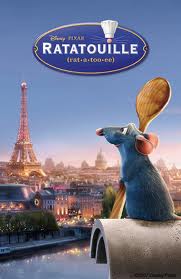
Ratatouille: Fate, Destiny and the Hero’s Journey
The premiere workshop is an examination of the journey to becoming who we are destined to be through the 2007 animated feature film, Ratatouille. Remy’s journey from a rat subsisting on scraps to a grand celebrated Parisian chef is a powerful metaphor for our own desires to leave the known world for one that lies beyond and is envisioned only by our dreams.
You will learn about the choices that transform a fated life into a destined one. You will see how all of us can get trapped by the beliefs, customs and values of society and how our perception of necessity often steers us away from our dreams and into a life marked by confusion, depression and a sense that there is no meaning to life beyond the mundane world. Part of us knows we have a destiny, but to achieve it, we must learn to choose intuitive guidance over the ego’s fear of humiliation and failure. In other words, where most of us get stuck – egoic fear.
You will find excellent depictions of the archetypes of the Artist, Hero, Invisible Child, Rebel, Liberator, Orphan, Companion, Warrior, Miser, Authoritarian, Judge, Priest and many more.
This course allows you to watch the film and listen to Jim’s commentary on your iPod or other digital player, taking your time to watch and learn. You’ll also get a free companion workbook with all kinds of supplemental info on the archetypes in the film, hero’s journey and exercises to apply to your own journey.
It’s a fun way to learn about archetypes and I helped produce it, so I am doubly proud.
Save $5.00 on the purchase by using the offer code: podcast
Find out more: http://jimcurtan.com/audio-workshops/
Purchase now:
Ratatouille: Fate, Destiny & The Hero’s Journey Audio Workshop
The Way: A Journey of Healing & Self Acceptance
The World – True Balance and Connection
Subscribe in iTunes
What we call the beginning is often the end. And to make an end is to make a beginning. The end is where we start from. ~TS Eliot
Finally we reach the culmination of this heroic journey with card 21 –The World! In this last of the regularly scheduled podcast series, Julienne and Cyndera discuss beginnings, endings, rebirth, transformation and fulfillment.
After all these trials and tribulations of the hero’s journey, we now come to know true balance and connection to our destiny looking back across our past and forward into the future. We feel the benefit of the journey thus far and see that our evolution is not just for ourselves but for the good of others. From this stage onward, our sense of risk is different because we have a greater understanding of the richness of life and recognize both the strength and space to hold challenge and loss as well as joy in the days to come.
In Joesph Campbell’s classic definition of the Hero’s Journey, The World card represents the stage of Master of Two Worlds as well as the Freedom to Live.

The Rider-Waite version of The World
Symbols in the World Card:
- Ring of laurels tied with a lemniscate (infinity symbol) – The ring of laurels is also called temenos (Gk) a safe place, asylum, a temple, also reminiscent of the Yoni, laurels are also a symbol of victory.
- Infinity symbol seen also in: Magician, Strength (also in the 2 of coins/pentacles card)
- Androgynous figure / Dancer– leg crossed over just as in the Hanged Man card (it’s opposite on this Mobius strip) – a dance , balanced opposites, an act of creation – the Self in equilibrium, perfect union of masculine and feminine.
- Lion (Leo), Eagle (Scorpio), Bull (Taurus) and the Human (Aquarius) – 4 fixed signs of astrology – 4 elements (air, earth, water and fire). These 4 symbols also appear in the Wheel of Fortune card. these can also refer to a passage in the Bible’s book of revelation
- Suspended between heaven and earth – remember the Fool as she fell over the cliff, suspended for a moment not realizing what’s she’s gotten herself into? The symbolism of suspension this time is of balance and trust.
- 2 wands – balance – command of opposites (references to both The Magician and The Chariot). Wands are about doing – this is a sign of readiness.
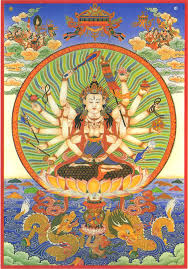
Cundi Bodhisattva
The World as the Bodhisattva Card
Bodhi [enlightenment] and sattva [being]. From the Mahayana tradition of Buddhismm, the bodhisattva vow is the commitment to put others before oneself. It is a statement of willingness to give up one’s own well-being, even one’s own enlightenment, for the sake of others. Taking the bodhisattva vow implies that instead of holding our own individual territory and defending it, we become open to the world that we are living in and are willing to take on greater responsibility.
Film and Fiction References
Cloud Atlas, book (2004) and film (2012)
One of the main themes is of freedom and connection. Eventually leading to the realization that all is one. Redemption and evolution. Characters from each of the weave of stories in both the book and film have revelations of oneness:
Sonmi-451: “Our lives are not our own. From womb to tomb, we are bound to others. Past and present. And by each crime and every kindness, we birth our future.”
Robert Frobisher: “And all becomes clear. Wish I could make you see this brightness. Don’t worry, all is well. All is so perfectly, damnably well. I understand now, that boundaries between noise and sound are conventions. All boundaries are conventions, waiting to be transcended. One may transcend any convention, if only one can first conceive of doing so. Moments like this, I can feel your heart beating as clearly as I feel my own, and I know that separation is an illusion. My life extends far beyond the limitations of me.”
Adam Ewing: “What is an ocean but a multitude of drops?”
Issac Sachs: “These forces that often remake time and space, they can shape and alter who we imagine ourselves to be, begin long before we are born, and continue after we perish. Our lives and our choices, like quantum trajectories, are understood moment to moment, at each point of intersection, each encounter, suggest a new potential direction.”
Additional film references:
The Tree of Life (2011)
Frida (2002)
The Great and Powerful Oz (2013)
The Fountain (2006)
The Matrix (1999) – In the very last scene of The Matrix, Neo makes a phone call , saying: “When I used to look out at this world, all I could see was its edges, its boundaries, its rules and controls, its leaders and laws. But now, I see another world. A different world where all things are possible. […] I can’t tell you how to get there, but I know if you can free your mind, you’ll find the way.”
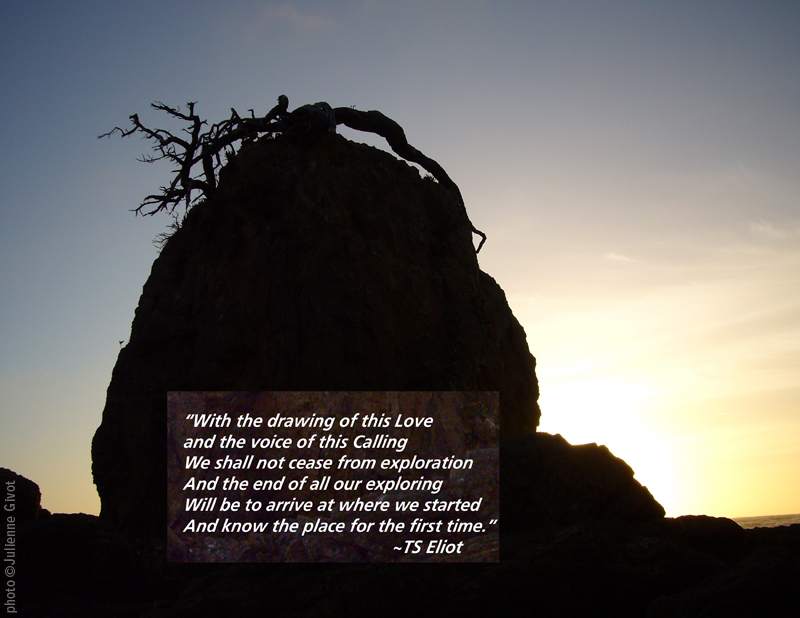
Popular associations with The World card:
- Fulfillment —– Accomplishment —– Success —– Integration
- Involvement —– Prospering —– Satisfaction —– Repleteness
- Contentment —– Good feelings —– Wholeness
“All shall be well, and all shall be well and all manner of thing shall be well.”
~Julienne of Norwich (14th century English mystic)
- The Rider-Waite version of The World
- Cundi Bodhisattva
Dating Survival Guides Part 4: Check Yo Self
Ever get super annoyed about a date’s habit of eating loudly, or feel uncomfortable because they have a super hot ex? It can be oh so easy to extrapolate small things into relationship-stopping catastrophes even when other aspects of the situation are great. When your list of deal breaking items gets longer than five, the Saboteur is lurking in your psyche and things are about to get messy.
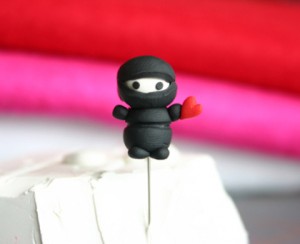 This archetypal dating guide has a reputation as ‘the Ninja’ because it has a way of being subtle and lethal before you know what hit you. I’m referring to the archetype of the Saboteur which is often cloaked in some pretty typical dating behavior.
This archetypal dating guide has a reputation as ‘the Ninja’ because it has a way of being subtle and lethal before you know what hit you. I’m referring to the archetype of the Saboteur which is often cloaked in some pretty typical dating behavior.
The Saboteur shows up when we feel vulnerable and acts as a defense for a wounded part of ourselves (often the Victim). The reasoning of the Saboteur in dating is that if we can beat a potential wound to the punch then we’ll suffer less. Simple, no? Simple but deadly to any possible relationship with another human being. Ever.
We’ve all probably been on one side or the other of the Saboteur’s razor sharp blade and it hurts either way. Truth is, we can’t mitigate our way out of pain or loss but we can be strong enough to hold our vulnerability and make choices with both wisdom and heart.
It is possible to level up our wisdom by being mindful and recognizing what we are really up to before making choices. Recognizing key patterns as archetypes is a good way to get a hand hold on our own internal machinations. If you can spot the sneaky, weirdly well intentioned Saboteur at work you can then review the situation in a different light.
In the words of the urban poet and rap star, Ice Cube:
You better check yo self before you wreck yo self
Cos I’m bad for your health, I come real stealth
~Ice Cube
Knowledge is power, so here is a primer on the Saboteur in relationships:
The Two Sides of the Saboteur

Unempowered Saboteur Archetype
AKA The Critic, The Cynic Keywords: Reactionary, Fear, Exaggeration, Over-thinking, Cynicism This is the part of us that is consciously or unconsciously ready to sabotage when we feel uncomfortable or get scared. It’s a pattern of over-thinking a situation and/or making extreme judgements as a defense.
The unempowered Saboteur’s voice:
“They do (insert action here) and boom! I’m outta here.”
“I just can’t date a man/woman who (insert annoying thing here).”
“He/she is really great – I wonder what is wrong with them?”
The Saboteur is the chief in charge of trying to figure everything out right away, laying emotional land mines or generally mucking up the works. At it’s worst, the Saboteur is like a pernicious detective drawing all kinds of scary conclusions until we are too confused to know what’s what. Like the Magician, the unempowered Saboteur is a master of creating illusion.
 Empowered Saboteur Archetype
Empowered Saboteur Archetype
Keywords: Listening, Wisdom, Clarity, Faith, Trust This is one of those patterns that the upside is being able to spot when the unempowered side is at play and take a breath to check-in with ourselves. It’s the part of us that says “relax, breathe, be open to the truth before you decide”. The empowered Saboteur’s motto is “Check it before you wreck it”. The empowered Saboteur as a representative of clear thinking can help you understand if doubts and worries are legitimate or just a function of fear. Also like a Magician the empowered Saboteur knows how the tricks work and can see what is an illusion before taking action.
“Old defenses block new success. Every defense is really a fear that forces you to play small, live in lack, and limit what is really possible. In truth, no defense can make you strong, no defense can win you freedom, and no defense can show you your true power.” ~Robert Holden, Ph.D.
4 ways to recognize and work with the Saboteur:
Between stimulus and response there is a space. In that space is our power to choose our response. In our response lies our growth and our freedom.
~Viktor E. Frankl
Trigger Not So Happy
Phone a Friend
Speaking with a trusted friend, coach or therapist is often the way to get the Saboteur to put down the sword and so you can hone in on what you really want. You might even be right about your next action but if you make your choice out of wisdom and not fear you will treat everyone humanely and feel a whole lot better about your choice.
The Price of Admission
Over-thinking A Square
“Intellect confuses intuition.” ~Piet Mondrian
Here is a sweet video that represents both aspects of the Saboteur.
Judgement – Redemption, Evolution and Our True Calling
Subscribe in iTunes
With a trumpet blare and a scene depicting people rising from graves as shown in Judgement – card number 20 of the Tarot, Julienne and Cyndera discuss how the hero of our journey is called to leave the old behind – not just Death and those stages in between. This penultimate edition of the Archetypal Tarot Podcast sees this as a 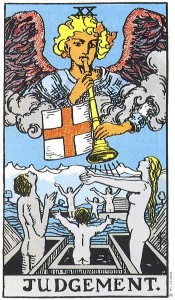 stage of the rebirth process where one is asked to call the old selves back up and with it the old stories to release their particular hold on us and see them in a new light.
stage of the rebirth process where one is asked to call the old selves back up and with it the old stories to release their particular hold on us and see them in a new light.
Through the lessons and experiences of the journey we can now judge what best action should be taken and rise up to the challenges to embrace our life and answer the greater ‘Calls’ of our life beyond the egoic or the mundane. We see now our true calling is in every breath of our lives playing out in every moment.
Julienne regales us with how this story of redemption and evolution is played out poignantly in the 2012 epic film Cloud Atlas with the compelling stories of lives interwoven over 500 years. Cyndera relays how the academy award winning documentary “Searching for Sugarman” captures the essence of a true calling held within the Judgement card.
Throughout the podcast the ideas of redemption, evolution and levels of change effect how we see our true calling. References and a list of symbols, links and images are below.
Redemption: The old story will always be the old story to contend with to make up for – to redeem.
Evolution: The story is bigger – inclusive of what happened and holds space for the purpose of what happened beyond our limited understanding. What we believed was a mistake is included in a larger connected story.
Symbols seen in the card:
- Angel – messenger, not of the earth
- Arms – accepting with open arms – embracing the new direction – surrender
- Trumpet – the call to the new life – to be reborn – out of complacency – awaken
- Flag with the cross – announcement or proclamation – staking a claim to a new territory – the equal armed cross is about balance – possibly the balance of the masculine and feminine – of agency and community – also 4 sections reflect the 4 directions, the 4 elements – a meeting place
Recommended Books:
Callings: Finding and Following an Authentic Life By Gregg Levoy
The Soul’s Code: In Search of Character and Calling By James Hillman
A Life at Work: The Joy of Discovering What You Were Born to Do By Thomas Moore
Recommended Video:
Craig Chalquist Earthrise: Beacon of a New Worldview
Recommended Films:
Cloud Atlas (2012)
Searching for Sugarman (2012)
also:
The Fall (2008)
The Tree of Life (2011)
The Fountain (2006)
Big Fish
Gran Torino
The Fisher King
Les Miserables
Goodwill Hunting
Jerry Macguire
Shawshank Redemption
Popular associations:
- Judgement —– Rebirth —– Calling —– Absolution
- Restart —– Accepting past mistakes/actions —– Release
- Forgiveness —– End of repression —– Reconciliation —– Renewal
- Decision —– Salvation —– New beginning —– Hope —– Redemption
The Sun – At Play With The Child
Subscribe in iTunes
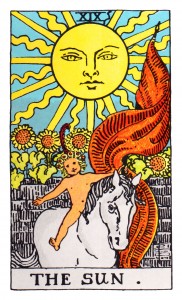
The Sun from the Raider Waite deck
Here Comes the Sun! After the dark debacle of the stage represented by the Moon card, the nineteenth card of the Major Arcana shares its rays of light on the Archetypal Tarot Podcast. Inside the protective walls of a golden kingdom, two children (or a child and horse in the Rider Waite) are happily at play. Like Romulus and Remus, suckled from the wolves of the last card, it is as if the birth of a new Rome has taken place as a long-awaited result of this Tarot journey’s recent trials. Julienne Givot and Cyndera Quackenbush explore this stage of rebirth by delving into the child archetype in its many manifestations, including its shadow.
Listen as Julienne and Cyndera share a synchronistic moment and find out how to have fun while even riding a city bus. In the Hollywood realm, Robin Williams as Puer (eternal youth), Tom Hanks in the film “Big” and Shirley Temple are discussed as examples of this stage. In the Sun card enjoy yourself in a land somewhere between the Teletubbies and the Secret Garden.
Popular associations with the Sun card:
• Optimism—Expansion—Being radiant—Positive feelings
• Enlightenment—Vitality—Innocence—Non-criticism
• Assurance—Energy—Personal power—Happiness
• Splendor—Brilliance—Joy —Enthusiasm
- Tom Hanks in “Big”
- The Teletubbies
- Shirley Temple
- The Sun from the Teletubbies
- The Sun from the Marseilles Tarot
- The Sun from the Raider Waite deck
Film and Television References:
- Teletubbies (TV 1997-2001)
- Sesame Street (TV 1969-present)
- Big (1988)
- Little Buddha (1993)
- Kundun (1997) Martin Scorsese
- Mr. Magorium’s Wonder Emporium (2007) All characters embody various aspects of the Child archetype.
- August Rush (2007)
- The Secret Garden
- Leon: The Professional (1994) Natalie Portman (shadow)
- Hanna (shadow) (2011)
- Actress Shirley Temple
- Actor Robin Williams
The Child: Innocence, Fun, Trust
The Child archetype resides in us all and is the first that we come to know. The Child archetype is sometimes called the guardian of innocence and it represents our beginning point. This archetype sets up our earliest perceptions of life, safety, loyalty and family. The heart of the Child archetype is one of dependency and responsibility. Addressing the Child archetype within can awaken a new relationship with life, a new start.
Related Articles:
Summertime and the Child Archetype
Three Archetypes of Awesome
The Child Archetype
Mr. Magorium’s Wonder Emporium
No Teletubbies were harmed in the making of this podcast.
The Moon, Madness and The Artist
Subscribe in iTunes
After emerging from the water’s edge of the lovely Star maiden, the Archetypal Tarot podcast heads to the eighteenth card of the Major Arcana – the Moon. Sounds romantic, doesn’t it? But what’s this – a barking dog, a howling wolf and a …. lobster climbing from the depths?!?! Julienne Givot and Cyndera Quackenbush have a WTF moment as they explore the depths of this surprising, surreal imagery incorporating the archetype of the Artist and the penchant for creative madness.
Our hero of the Tarot Journey has reached her dark night of the soul and finds that she has spiraled back to the dark wisdom behind the High Priestess’s veil. In relation to the “lunacy” encountered in the moon, Julienne presents to us the Artist archetype and its shadow. Cyndera shares some highly personal details and a passage from Carl Jung’s Red Book. The following films, discussed in this edition, beautifully illustrate the Moon themes of madness, creativity and dreams: The Hours, Eternal Sunshine of the Spotless Mind and The Science of Sleep.
The lunatic, the lover, and the poet
Are of imagination all compact.
~William Shakespeare
- The Moon based on the Raider Waite Tarot
- The Moon Card from the Marseilles deck
- The Moon by Isabelle Cardinal
- The Moon card inspired by the BBC program Sherlock.
- The Moon card from the Gaian Tarot deck
- Julienne’s rendition of the Moon Tarot
- The High Priestess from the Raider Waite Tarot deck
- From Jung’s Red Book
Popular associations for the Moon:
• Lack of clarity —– Tension —– Doubt —– Fantasy
• Deception —– Psychological conflict —– Obscured vision
• Confusion —– Illusion —– Fear —– Imagination —– Worry
• Romanticism —– Anxiety —– Apprehension —– Unrealistic ideas
Film and Fiction References:
- The Hours (2002)
- Eternal Sunshine of the Spotless Mind (2004) & Science of Sleep Directed (2006) by Michel Gondry
- Vincent Van Gough – Lust for Life (1956) , Vincent and Theo (1990)
- Pi (1998)
- David Lynch – Blue Velvet (1986)
- Fight Club (1999)
- Being John Malkovich (1999)
- The Piano (1993)
- A Beautiful Mind (2001)
- Bob Geldof in Pink Floyd The Wall (1982)
Books:
Valis by Philip K Dick
Sacre Bleu by Christopher Moore
The Bell Jar by Sylvia Plath
Girl Interrupted by Susanna Kaysen
Artists:
Salvador Dali , Basquiat, Frida (to name just a few. . .)
Related Articles:
An Artist Walks into a Monastery by Julienne Givot
Exploring Artistic Creativity And Its Link to Madness
Creativity and Madness
Artist (Artisan, Craftsperson, Sculptor, Weaver)
The Artist archetype embodies the passion to express a dimension of life that is just beyond the five senses. The Artist psyche is animated with the energy to express it into physical forms. The nature or relative grandeur of any form of expression is irrelevant; a chef can be as much of an artist as a painter or landscaper. The signature of artists is not in what they do but in how intense their motivation is to manifest the extraordinary. Doing what you do in such a way that you create an emotional field that inspires others also indicates the Artist energy at work, as does the emotional and psychological need to express yourself so much that your well-being is wrapped up in this energy.
The shadow Artist comprises many cliches, including an eccentric nature and the madness that often accompanies genius. The Starving Artist represents the fear of financial ruin or the belief that fame and fortune come only after death, which often cause artists to suppress their talents. In evaluating your relationship to this archetype, recognize that the need to bring art to others, such as dedicating part of the energy of your life to supporting artists, is as much an expression of the Artist archetype as actually holding a brush in your hand.





